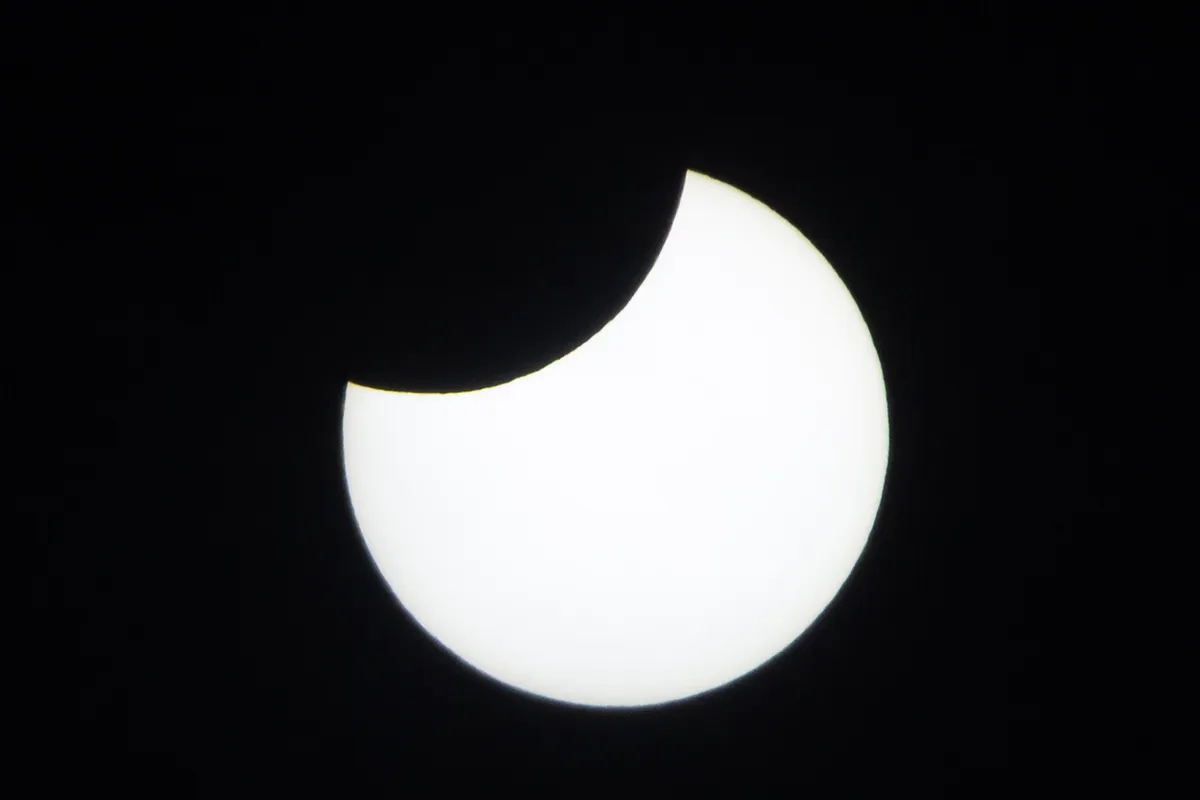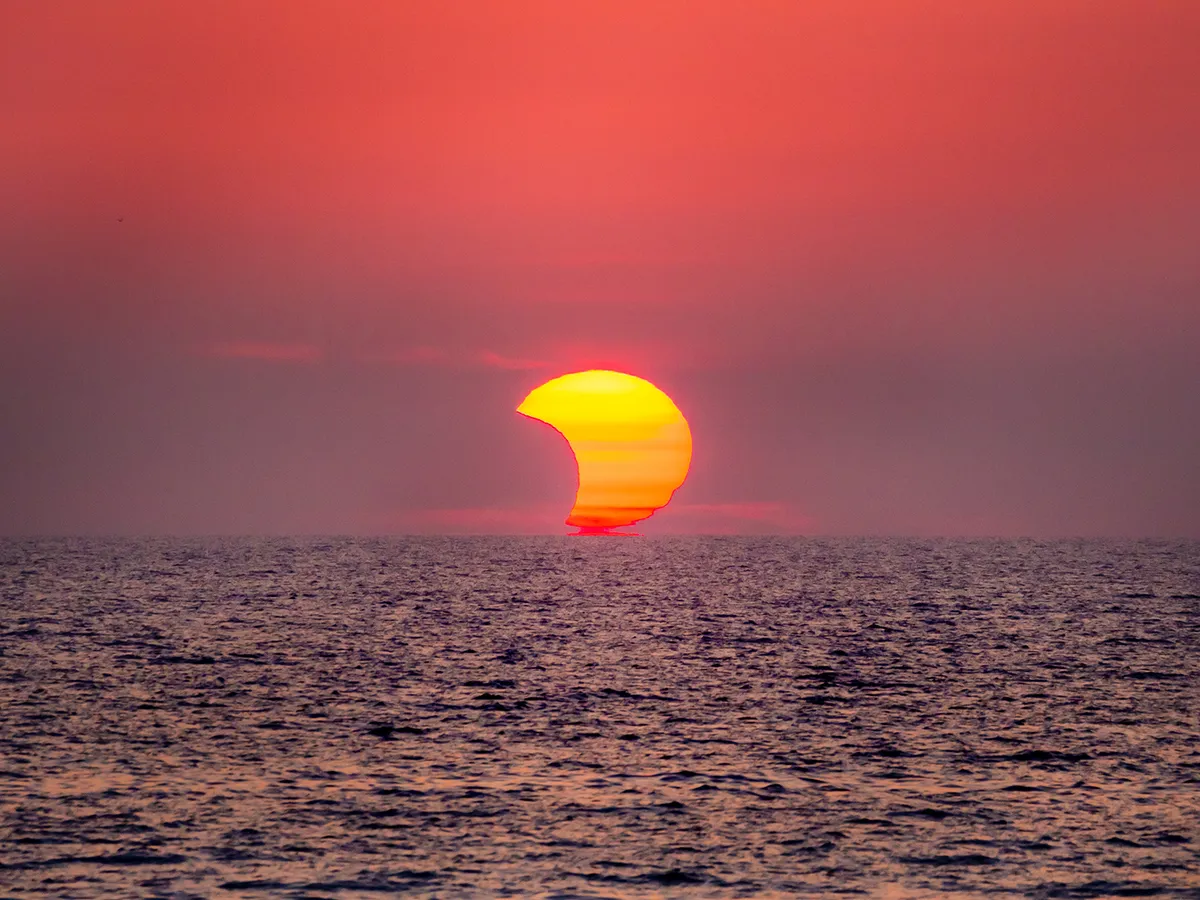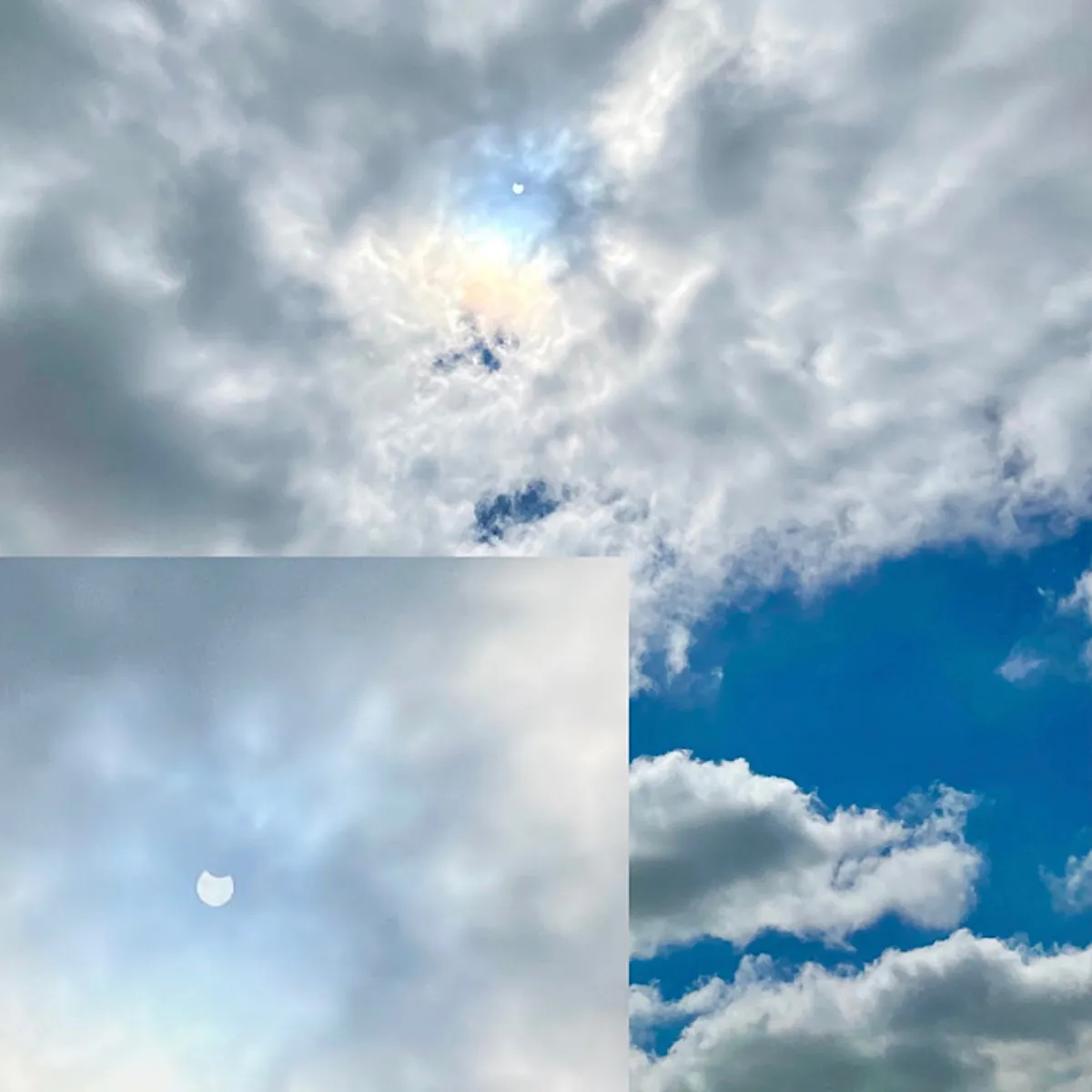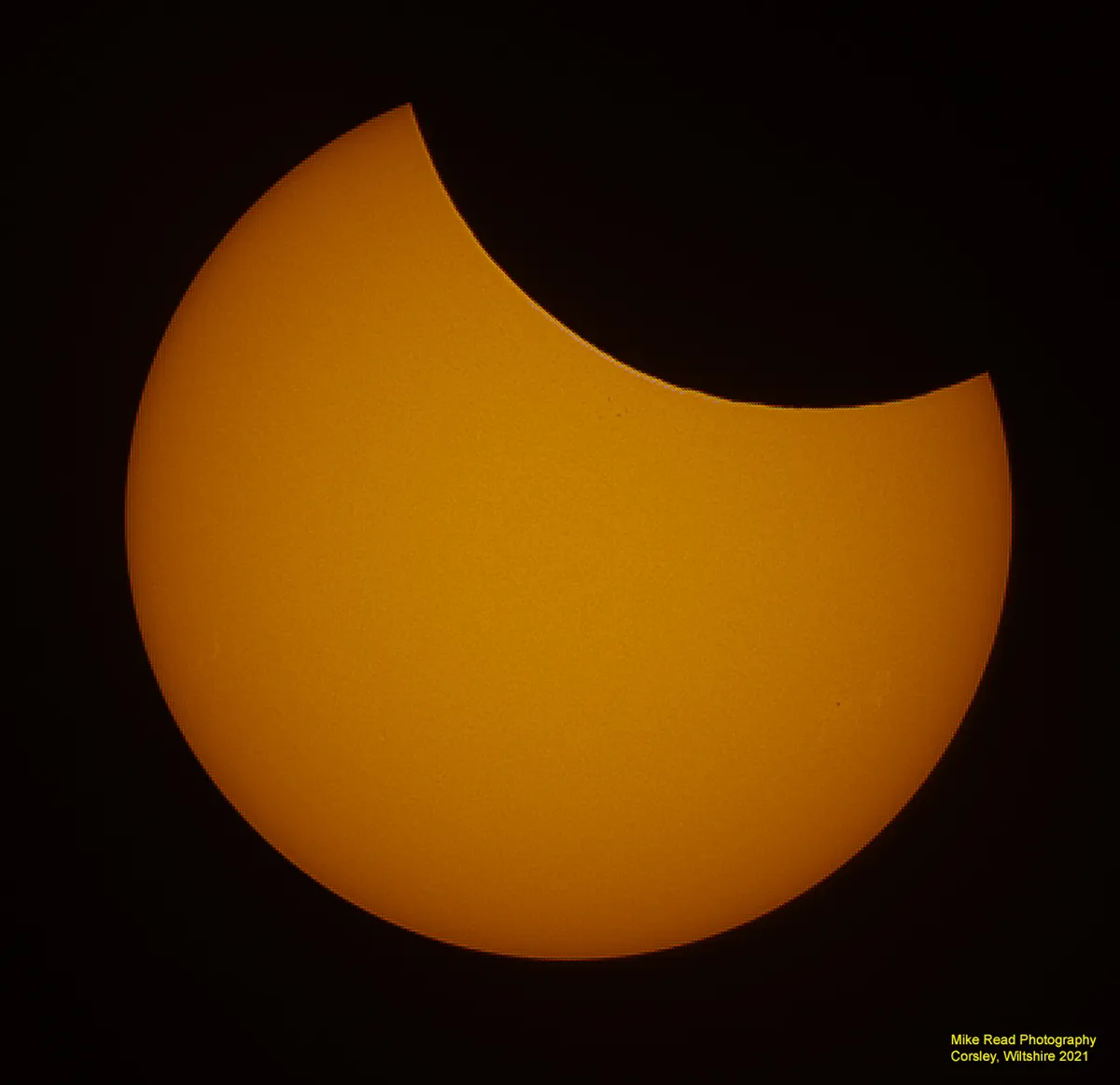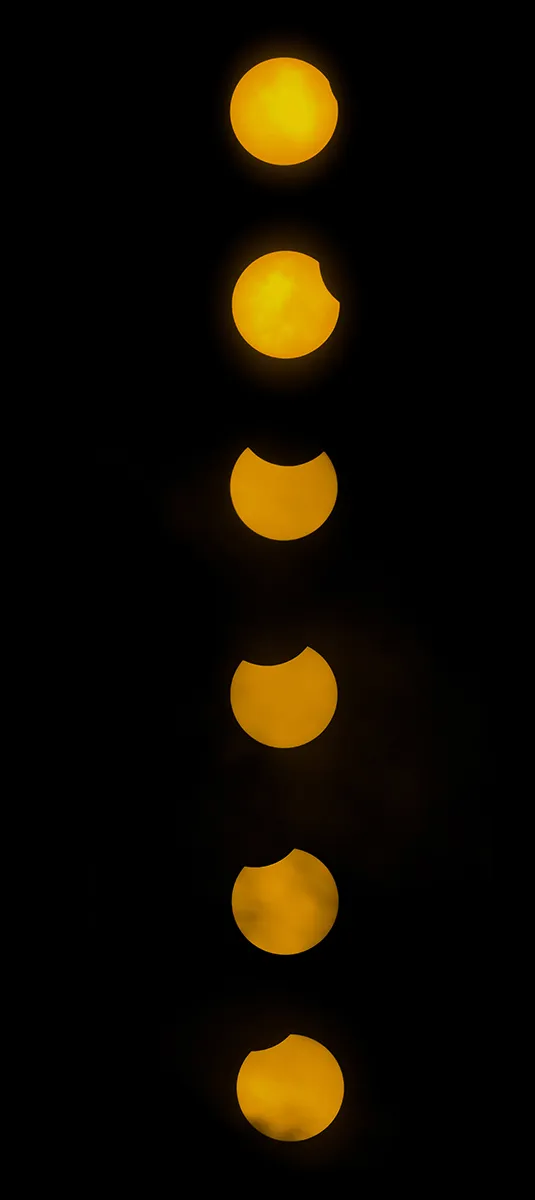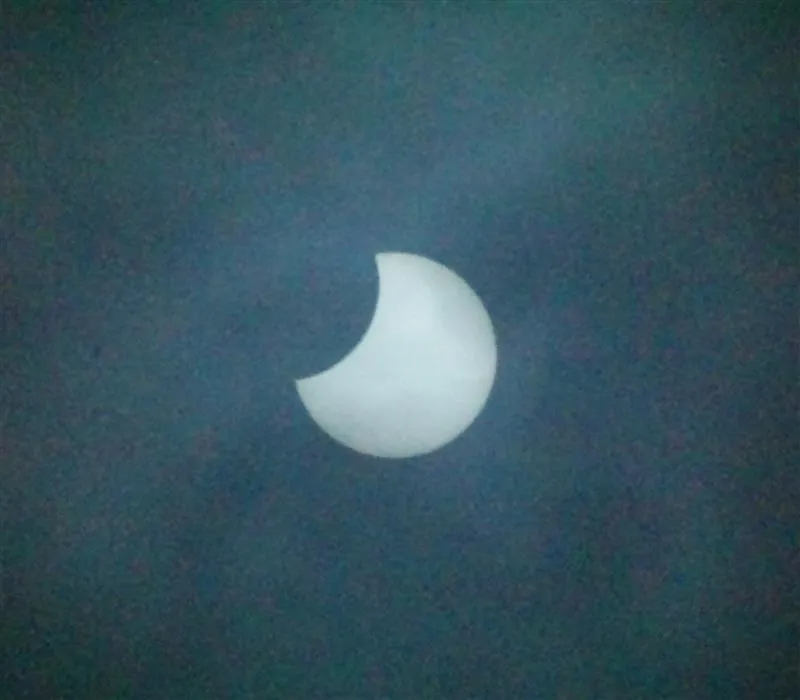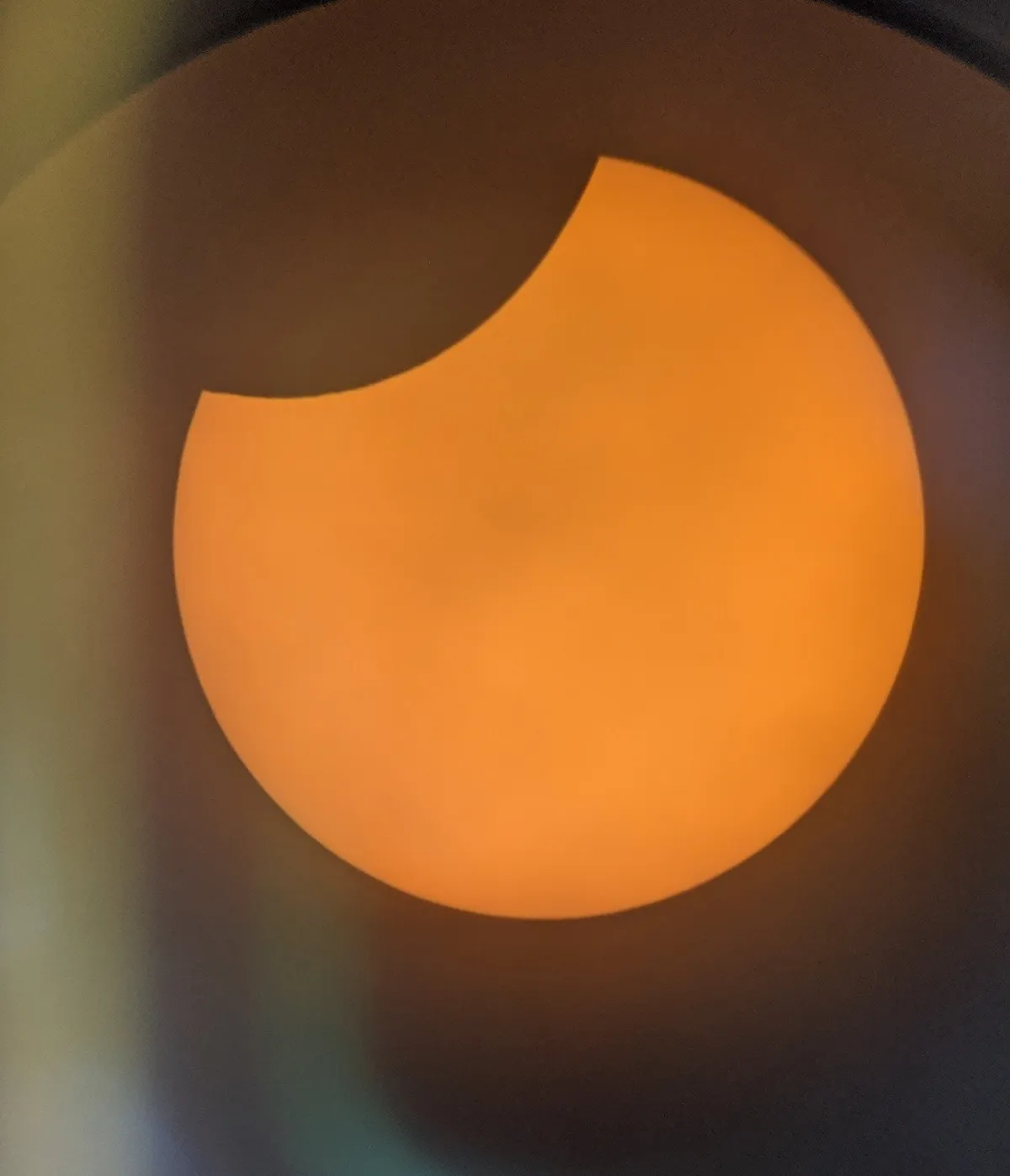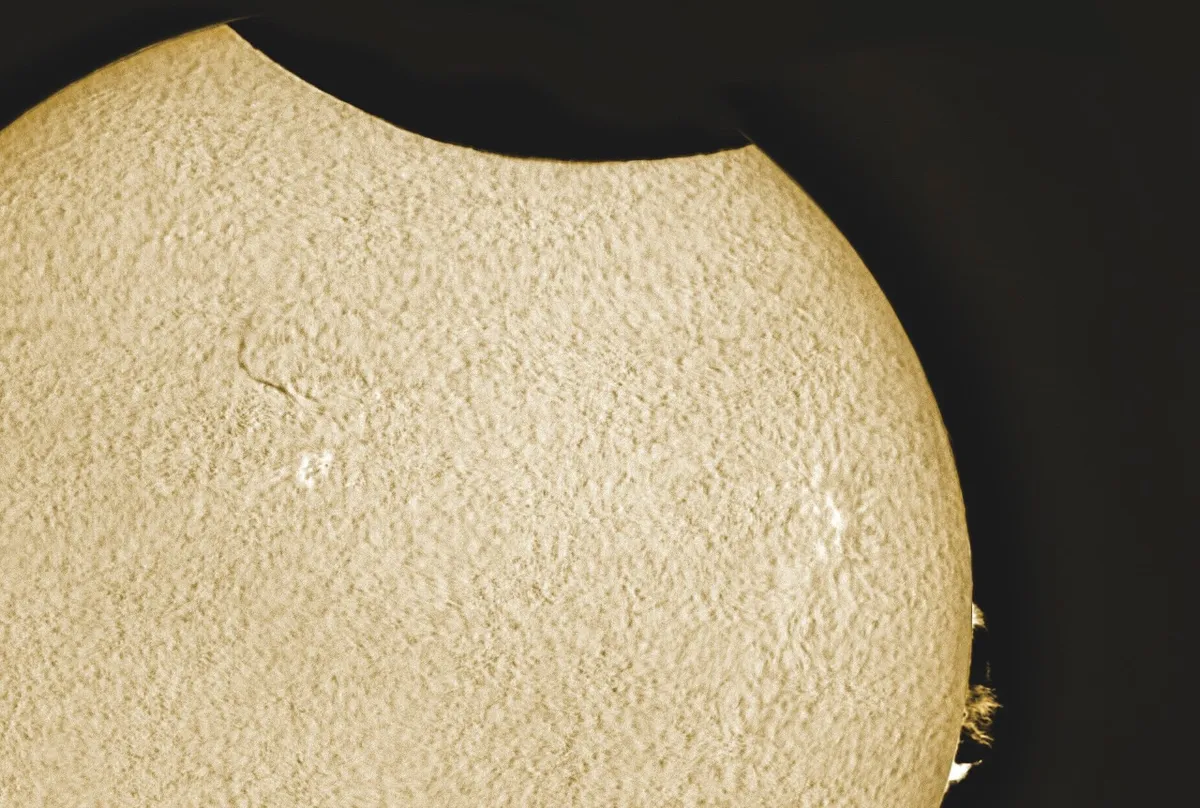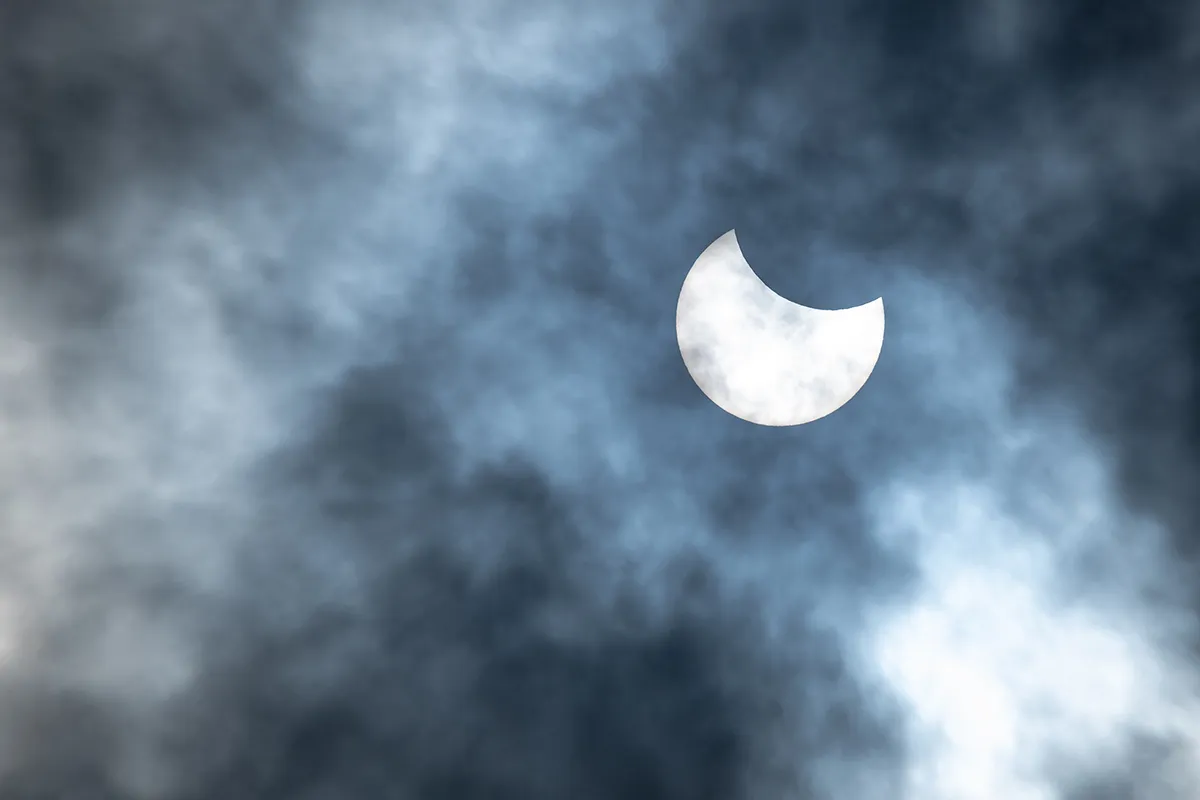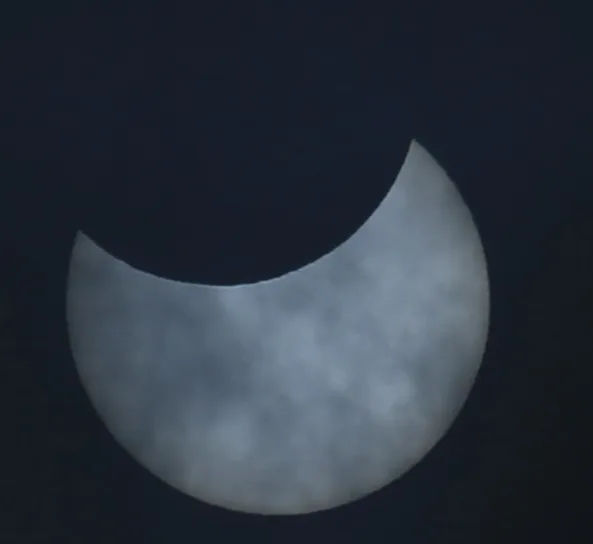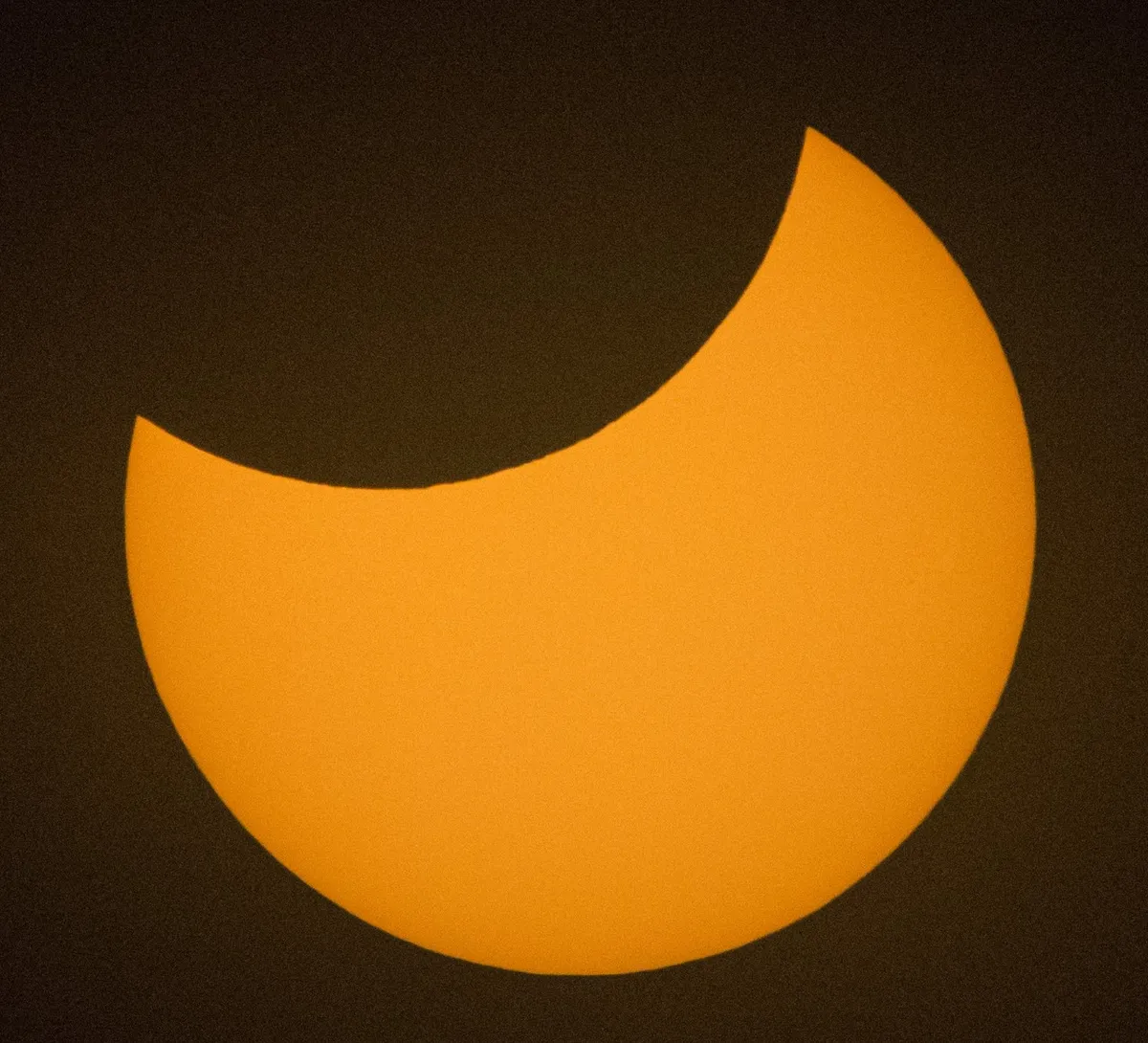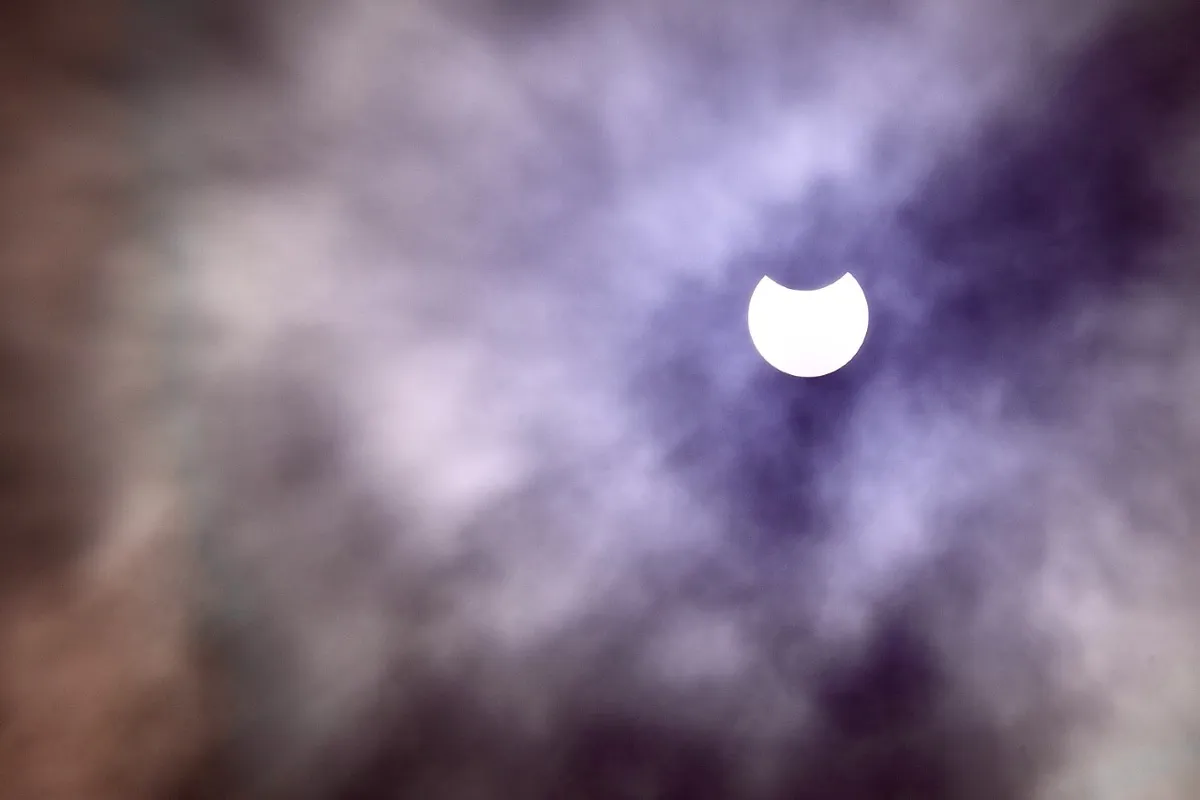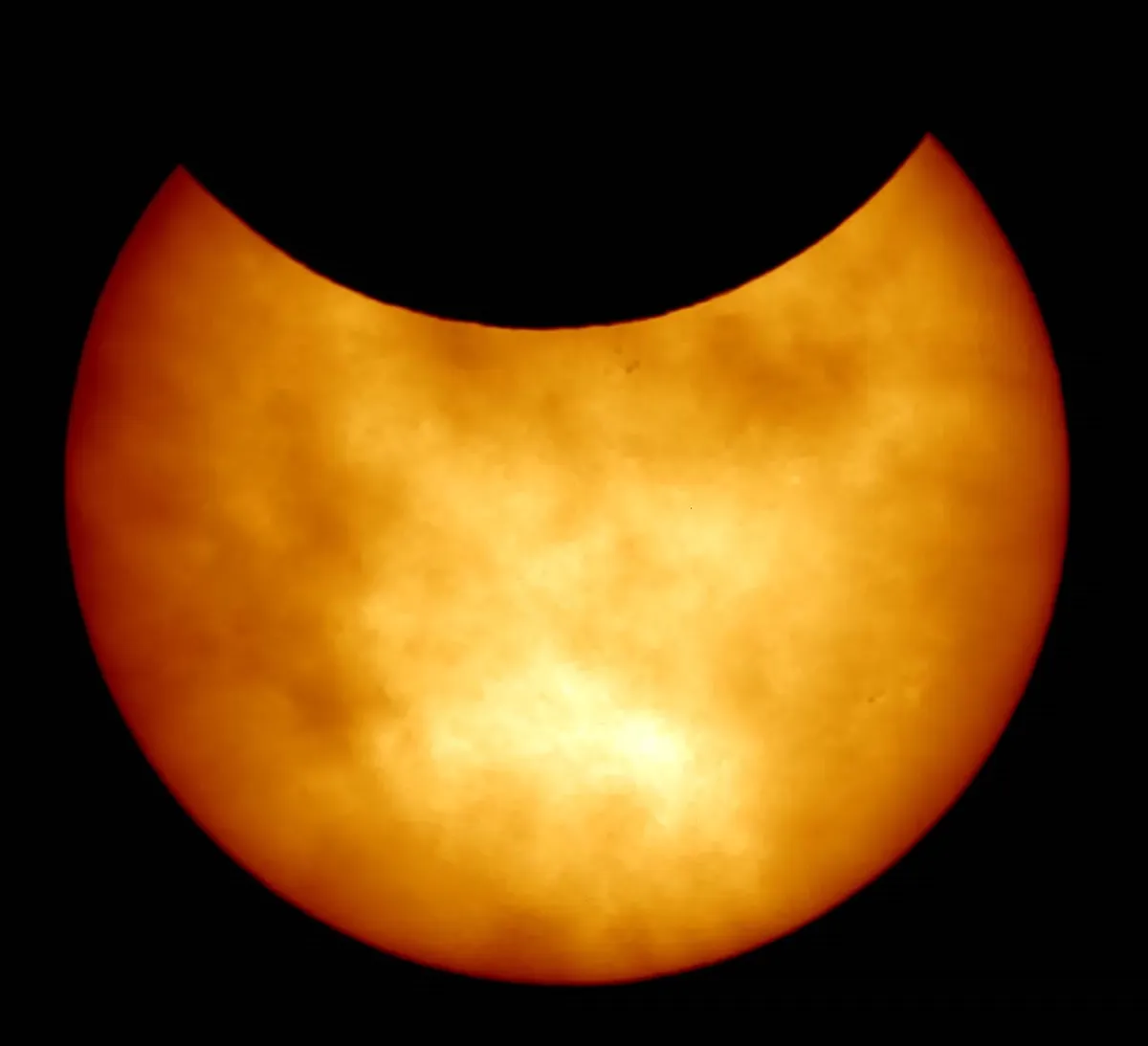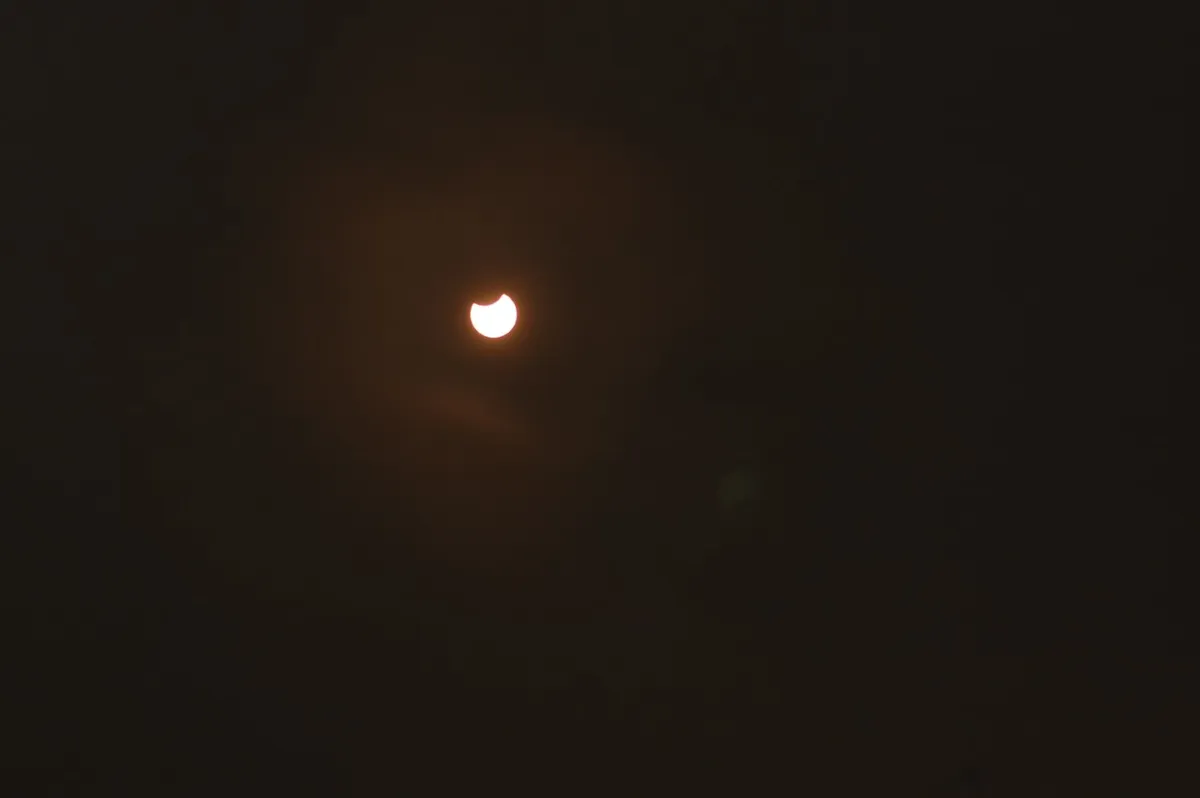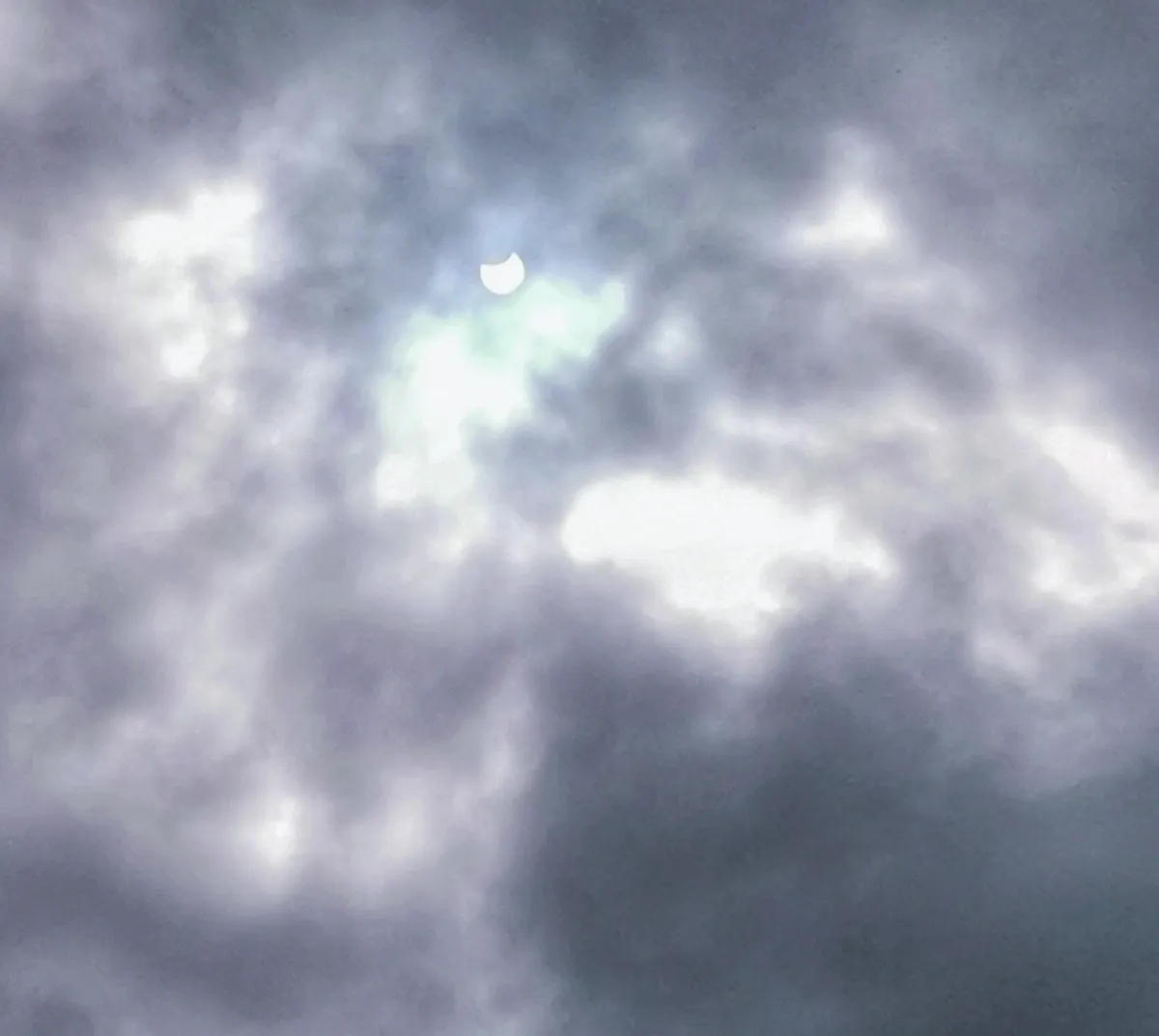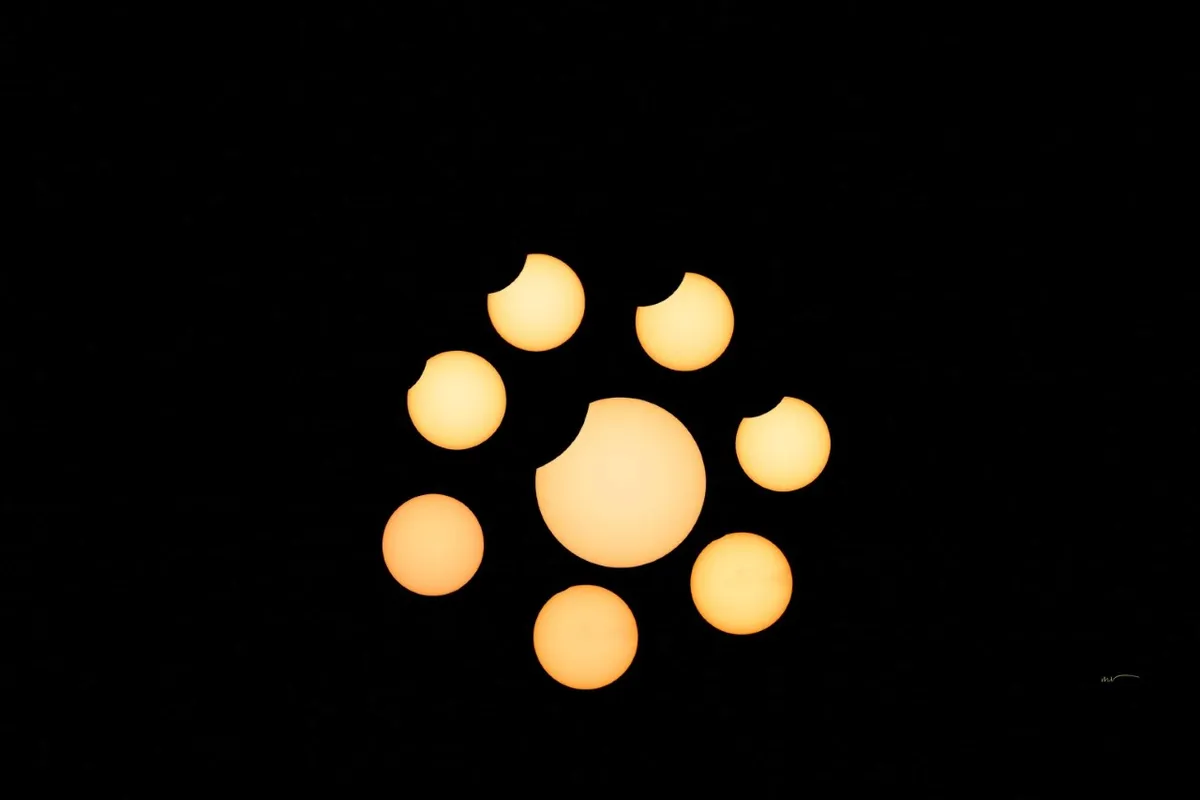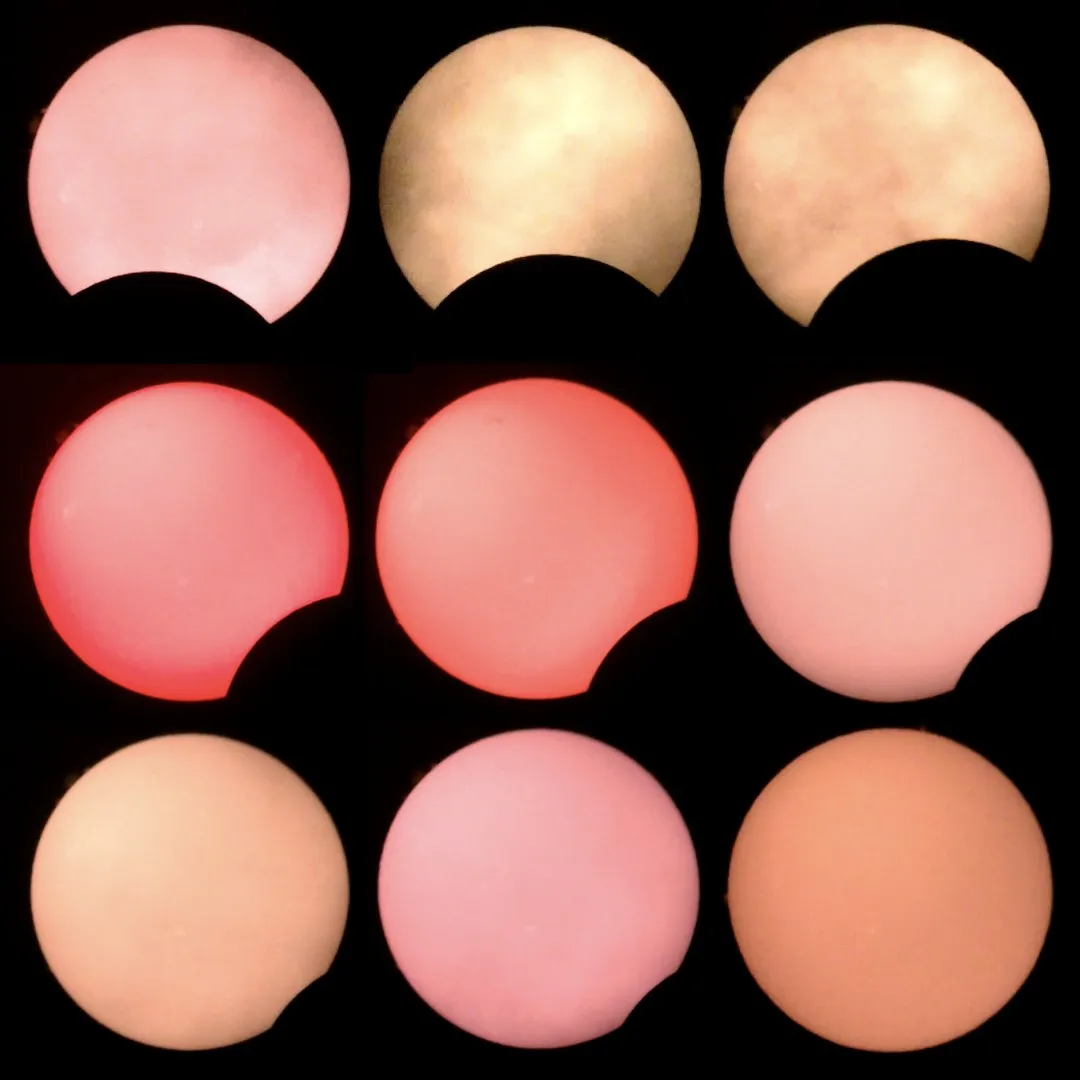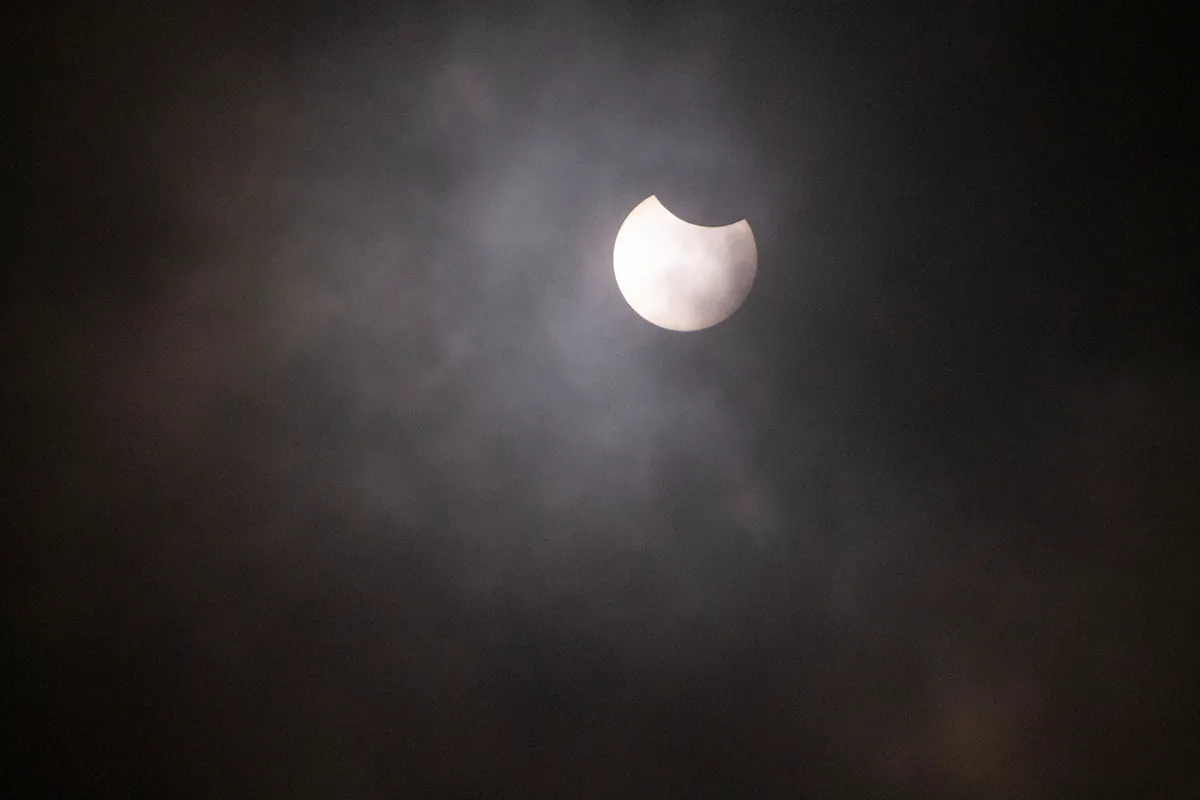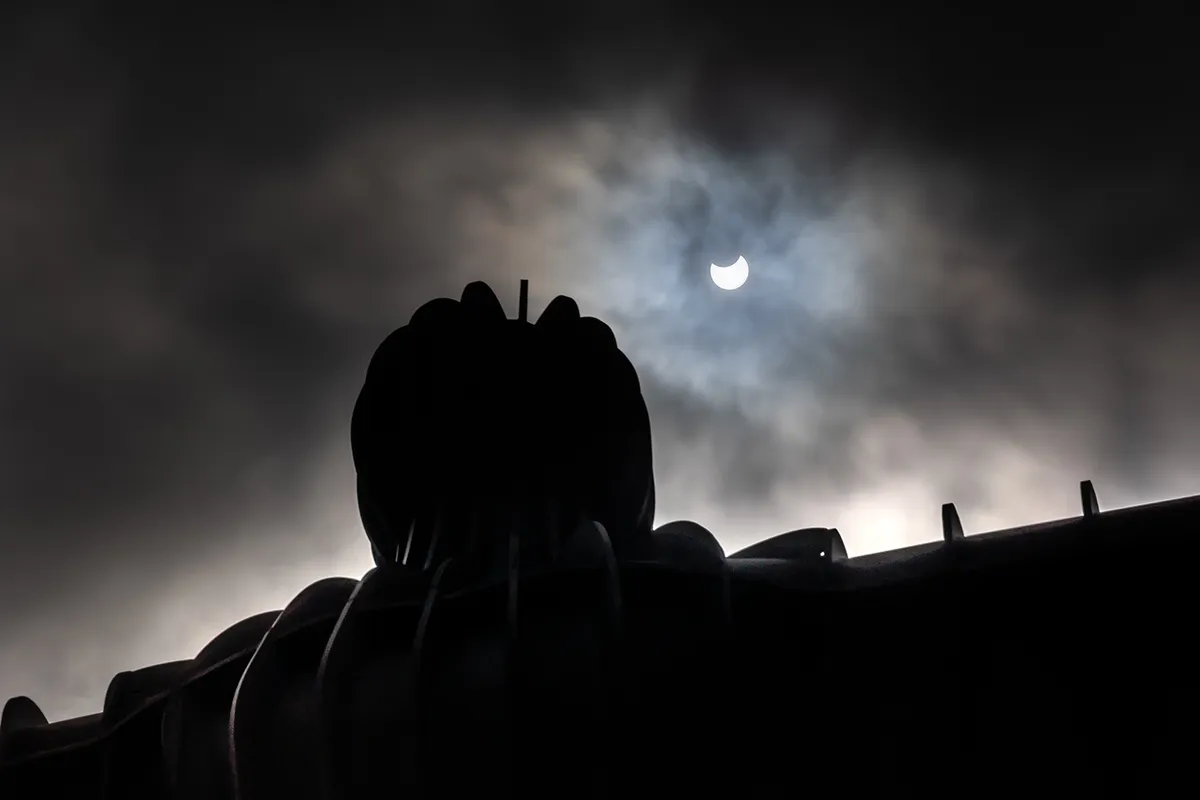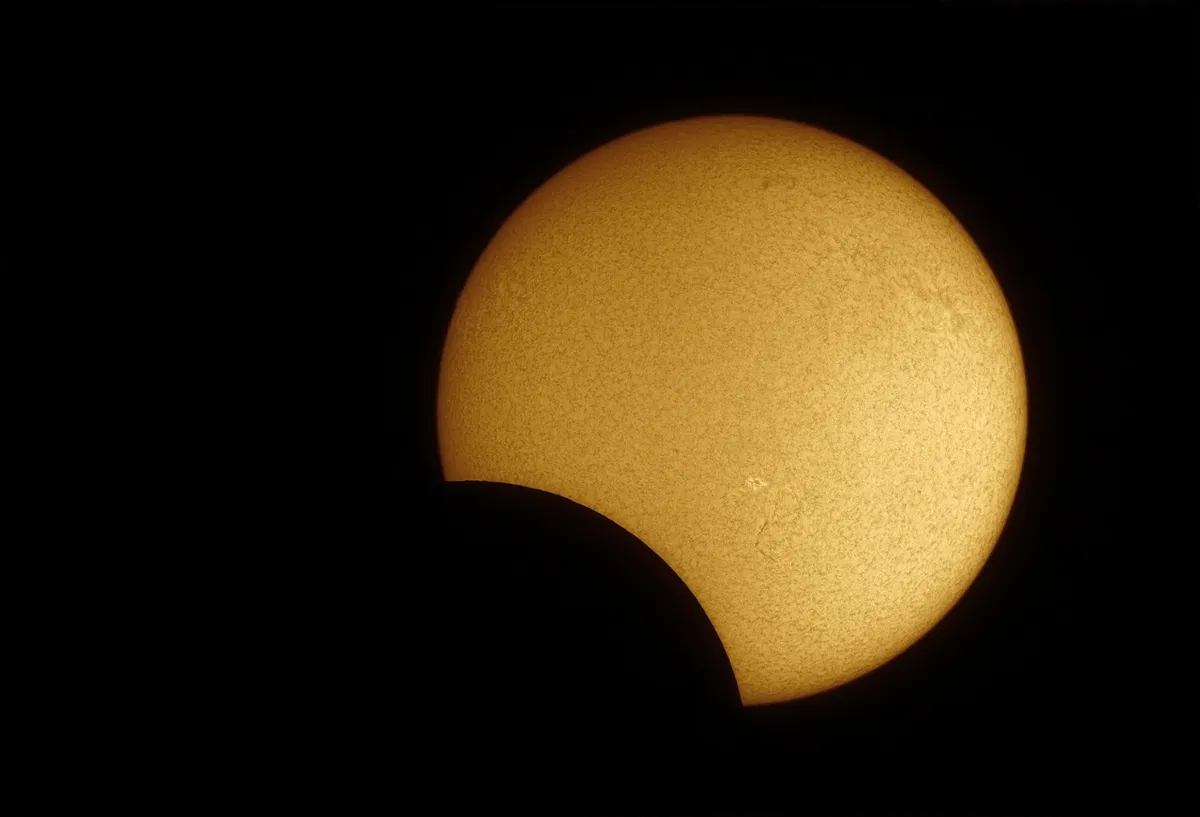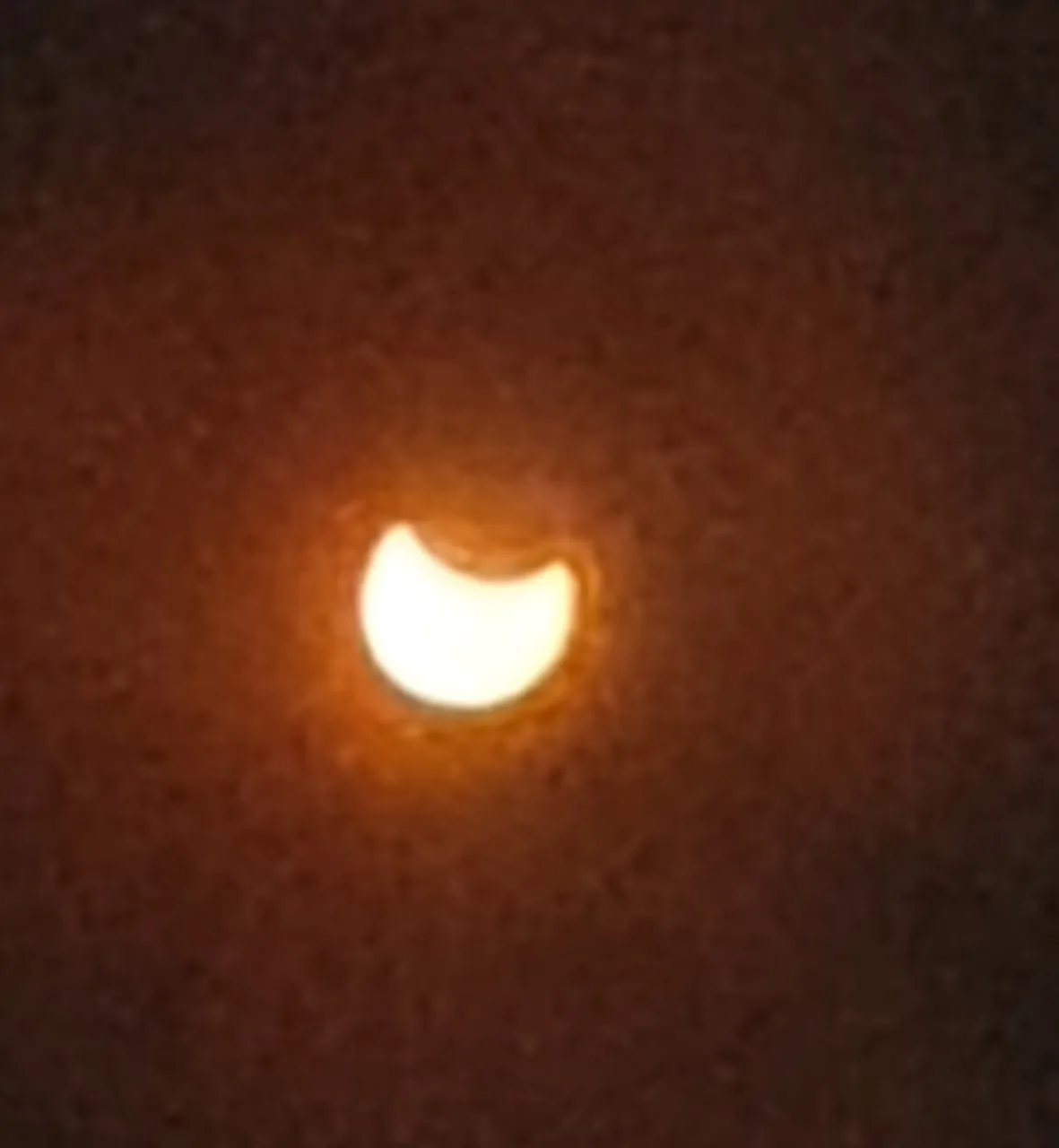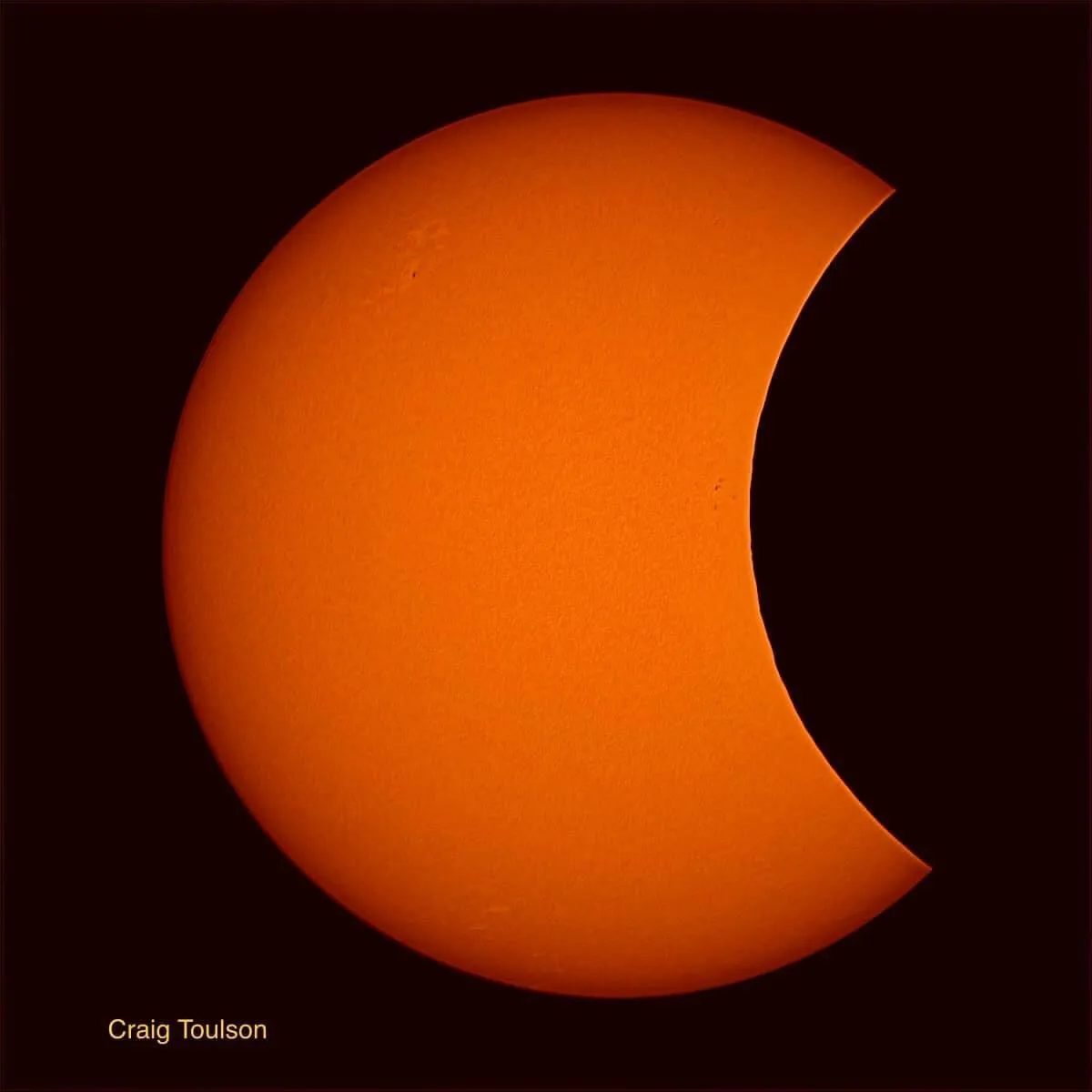On Thursday 10 June 2021, an annular solar eclipse - or 'ring of fire' - was visible in the far northern hemisphere, sweeping from northern Canada across Greenland and the North Pole (the only eclipse of the century to do so) before ending over Siberia.
From these areas eclipse-chasers were able to appreciate the annular eclipse or so-called 'ring of fire' in full, but from the UK, north America, northern Europe and other parts of the world, viewers were treated instead to a beautiful partial solar eclipse.
Many eclipse chasers and BBC Sky at Night Magazine readers who were lucky enough to get a gap in the clouds got in touch to share their experiences and images of the solar eclipse.
Here are some of our favourites:
Images of the 10 June 2021 solar eclipse
What was the 10 June solar eclipse?
Below is our guide to the solar eclipse, as we reported on it in the lead up to the event so that, if you didn't manage to catch it, you can find out what you missed.
Here we went through how to see the 10 June eclipse, what you could expect to see if you were along the path of annularity and how viewers in the UK could see it.
Missed this one? Find out when and where the next eclipse is taking place or read our guide to the 4 December total solar eclipse.
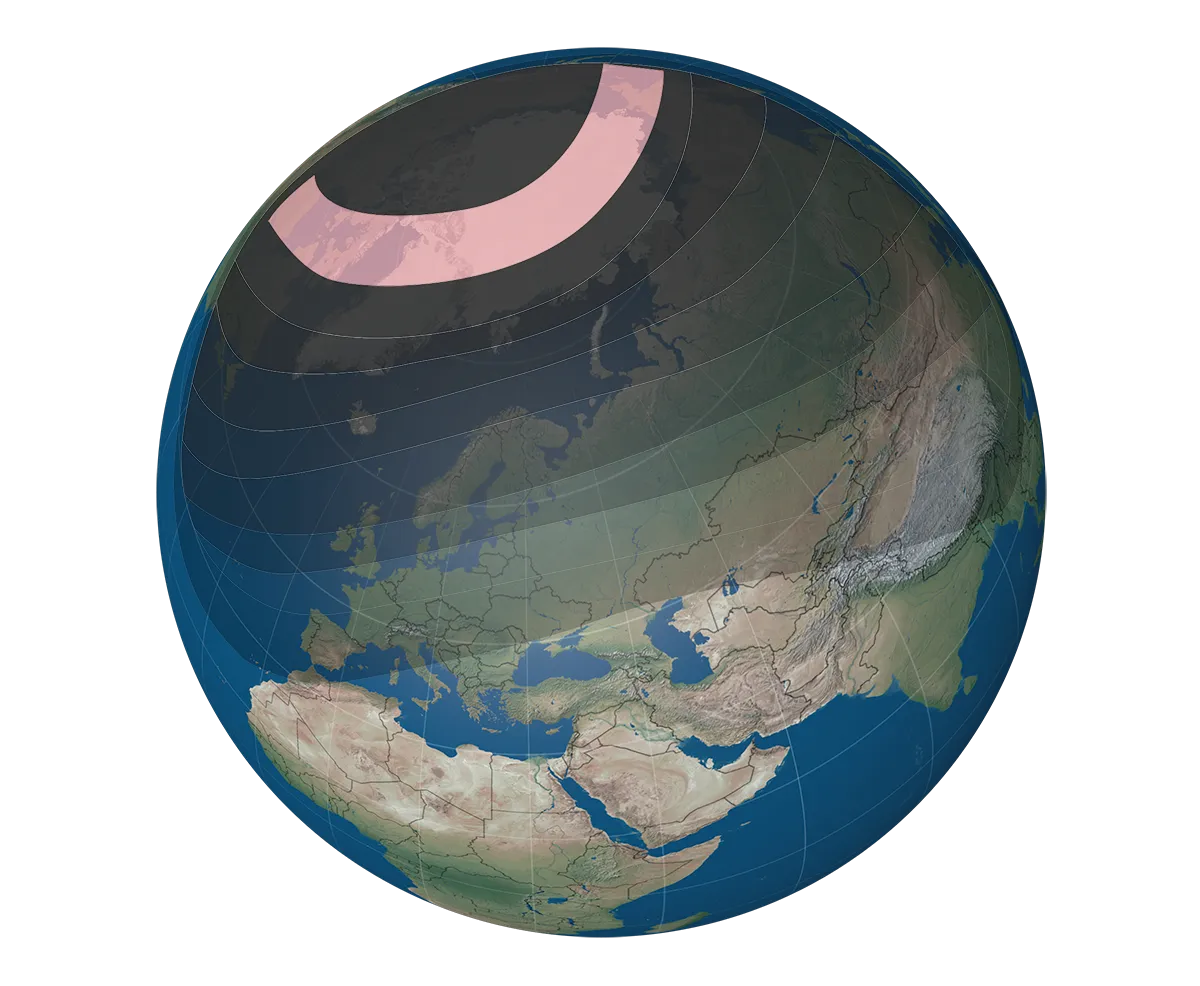
What is an annular eclipse?
During the 10 June eclipse, nowhere will the Sun be totally covered like in a total solar eclipse. This is an ‘annular’ eclipse, where the Moon’s shadow doesn’t quite reach Earth’s surface and falls a little short, creating a beautiful bright ring instead.
Annular eclipses come about because the Moon’s orbit isn’t entirely circular but elliptical, and on 8 June 2021 the Moon reaches the furthest point from Earth on its orbit – apogee – when it will appear smaller in the sky than normal.
It’ll still be smaller on 10 June, the day of the eclipse, and it just so happens that the solar disc will appear slightly smaller then too. In June 2021, Earth is close to apogee in its elliptical orbit of the Sun, but even so, the Moon’s small disc will still not cover it totally.
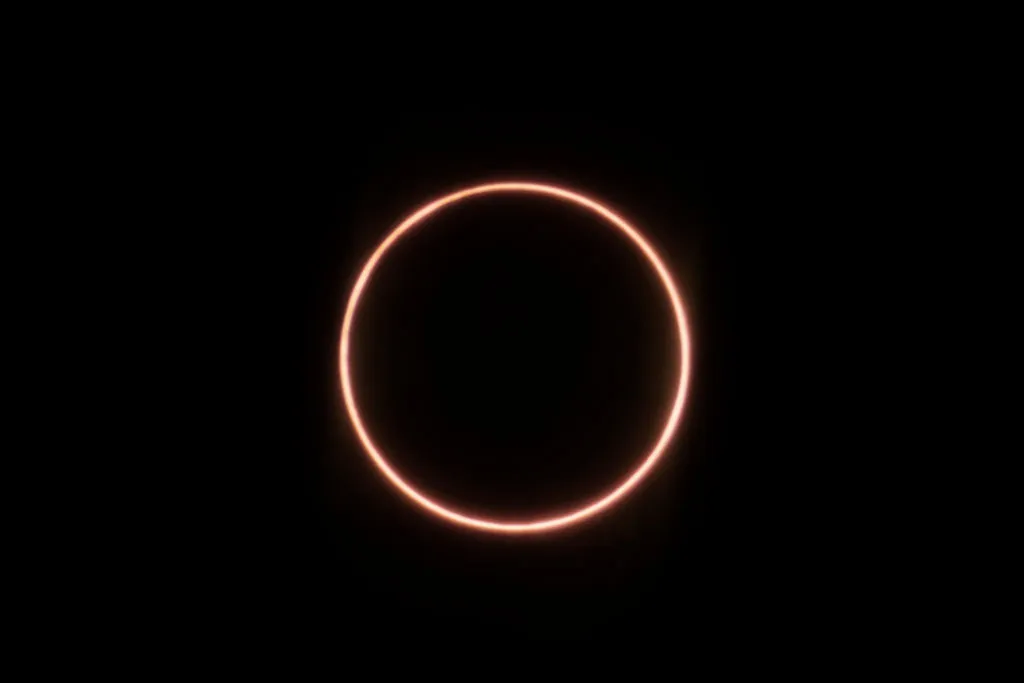
These orbital effects give rise to a ring or annulus of light, where the outer edge of the Sun is visible even at maximum eclipse.
You don’t get to experience the full effects of totality, but it is still an awe-inspiring spectacle to witness, often referred to as a ‘ring of fire’ eclipse.
See the 10 June eclipse from the UK
On 10 June 2021, those viewing from the UK will be able to see a partial solar eclipse. This is because viewers will be thousands of miles south of the path of annularity enjoyed by eclipse-watchers further north.
From the UK, the eclipse occurs late morning and favours those living in the northwest of the country.
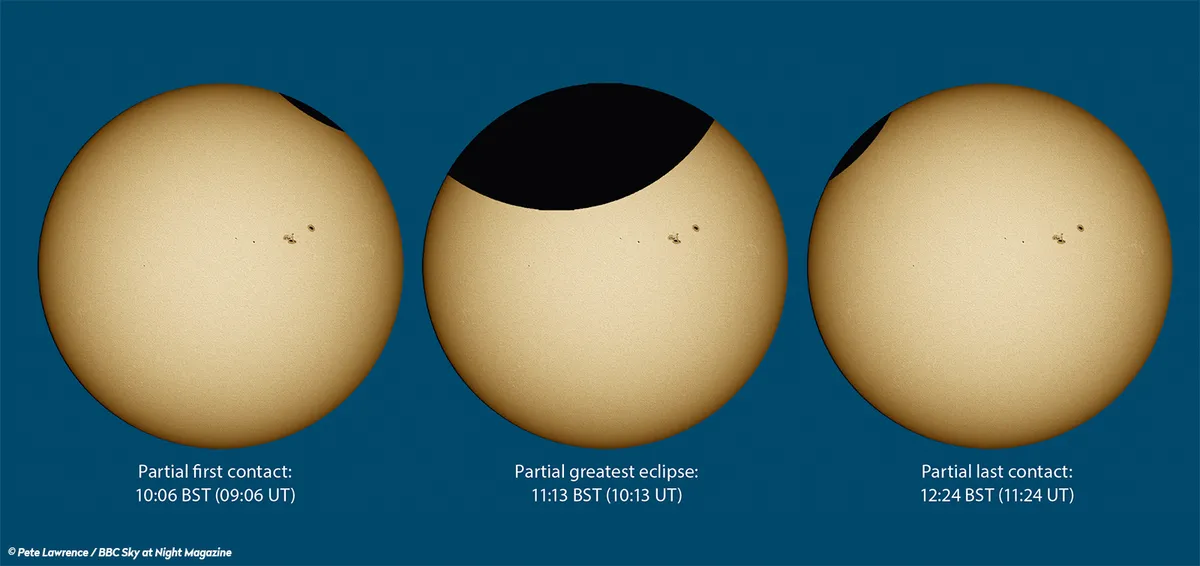
Partial eclipses are defined by one of two values: eclipse magnitude and obscuration.
Eclipse magnitude defines how much of the Sun’s diameter is covered by the disc of the Moon, while obscuration indicates how much of the Sun’s disc area is covered as a percentage.
If the Moon’s disc encroaches so that its limb reaches the centre of the Sun’s disc, this would be described as a magnitude 50% eclipse.
Half way across the Sun, the Moon would hide 39.1% of the Sun’s area, this being the eclipse’s obscuration value.
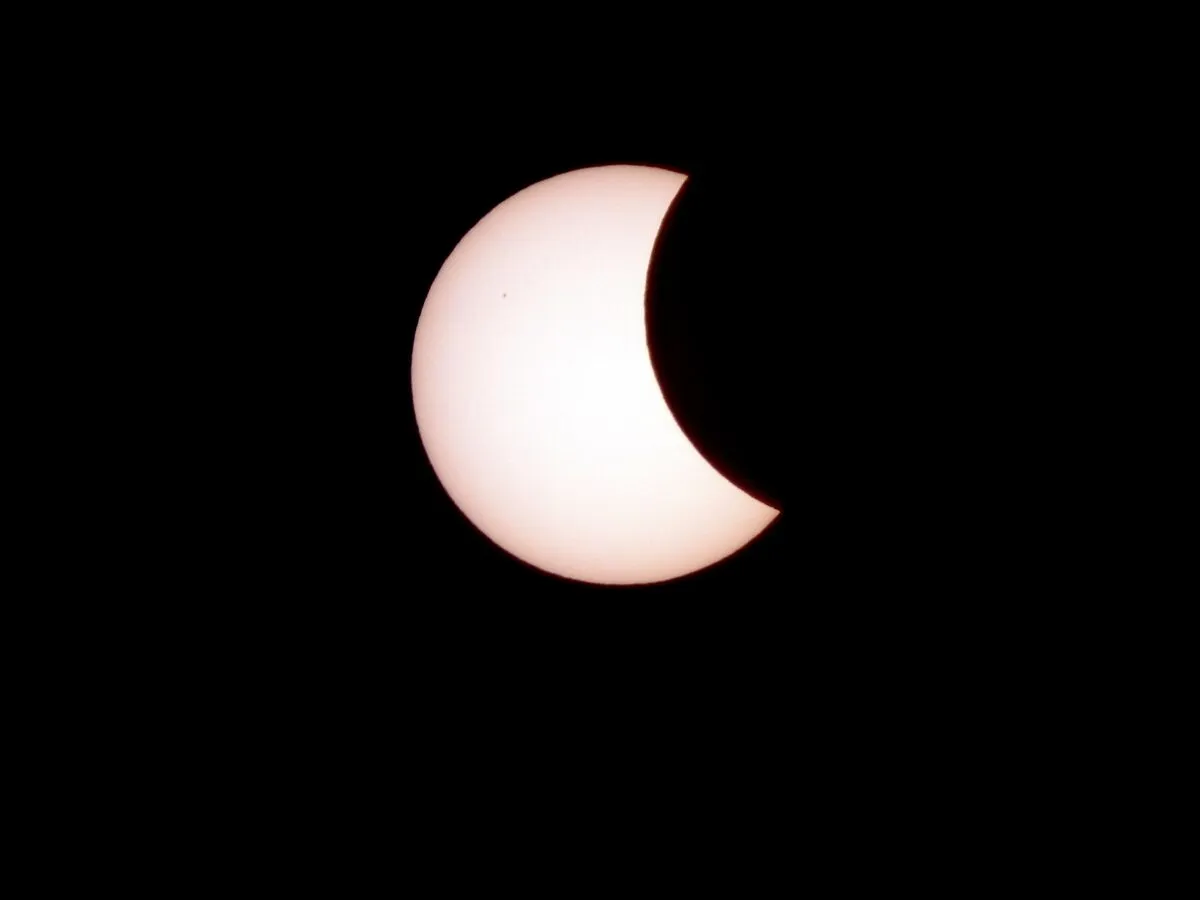
From Birmingham, first contact occurs at 10:06 BST (09:06 UT), with the point of greatest eclipse at 11:13 BST (10:13 UT), when the eclipse magnitude reaches 35.2%.
Last contact occurs at 12:24 BST (11:24 UT), bringing the event to a close. Birmingham’s maximum obscuration is 23.6%.
Northwest Scotland under clear skies will give the best views. From Lochinver, last contact starts at 10:08 BST (09:08 UT) with a maximum magnitude of 48.8% reached at 11:19 BST (11:35 UT).
Last contact from Lochinver is at 12:35 BST (11:35 UT), marking the eclipse’s end. Lochinver’s maximum obscuration is 36.8%.
The amount of solar disc covered by the Moon depends on how far north and northwest you are in the UK, as can be seen in our map below.
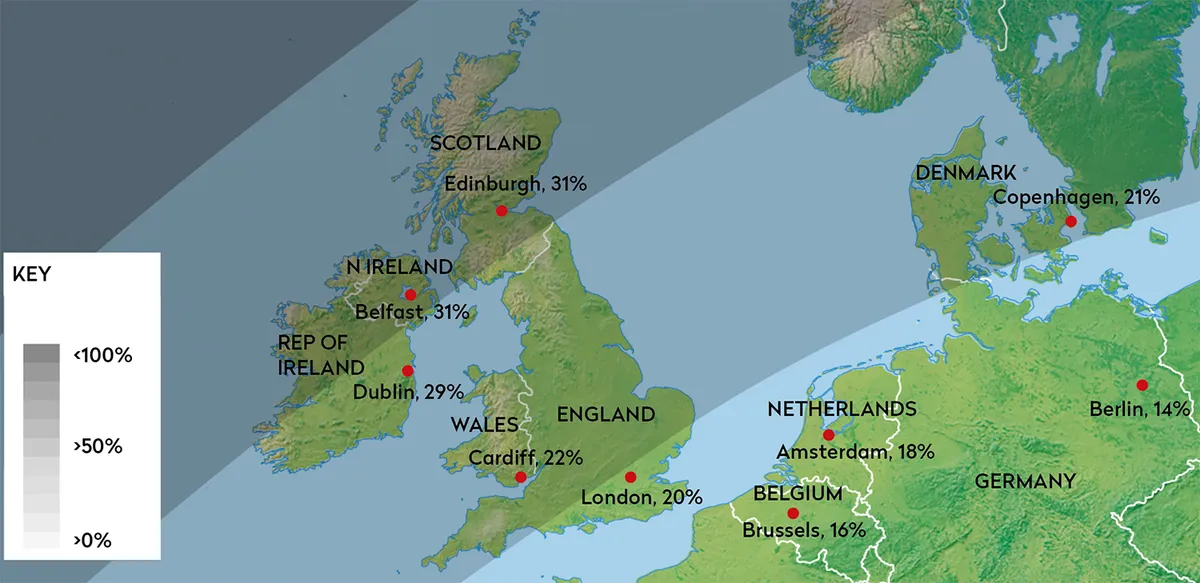
How much of the 10 June eclipse will you see from the UK?
- Penzance, Cornwall sees just under 22% obscuration at maximum
- London sees 20%
- Newcastle sees 28%
- Belfast sees 30%
- Edinburgh sees 31%
- Inverness sees 35%
- Shetland Islands sees the most at 39%
How to view the eclipse safely
Viewing a partial eclipse means observing the Sun and requires special care, as viewing sunlight directly with the naked eye can seriously damage your eyesight. Here are some safe methods you can use to observe the partial eclipse safely.
1
Eclipse glasses
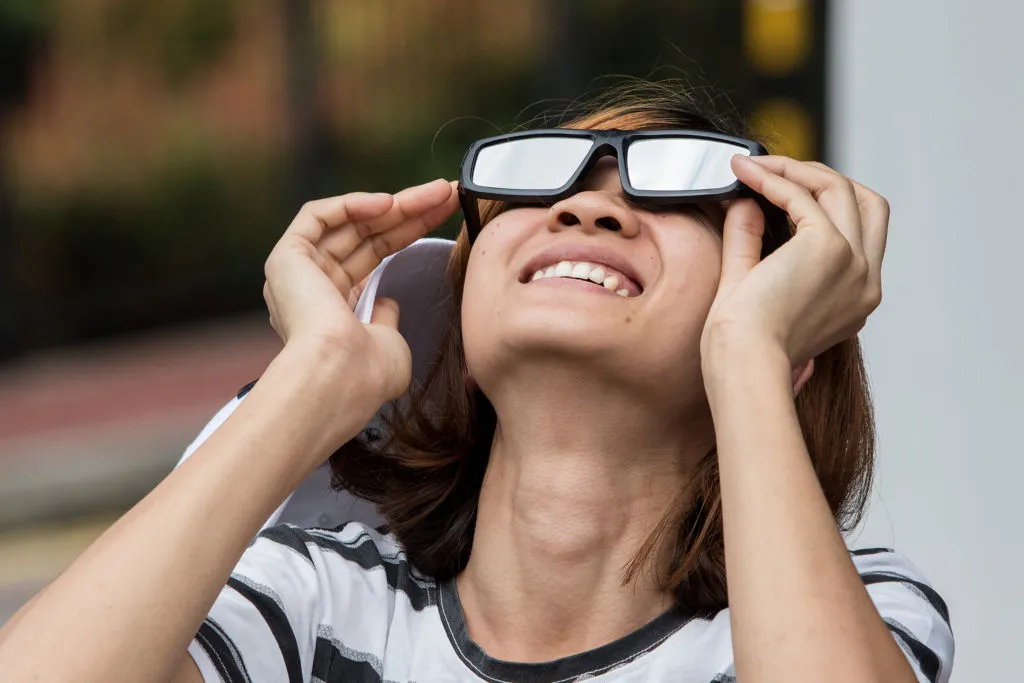
Probably the easiest and most convenient method of viewing a solar eclipse safely is to wear eclipse glasses, provided you can get hold of a pair! The specially-designed glasses are worn just like sunglasses and cut out all harmful ultraviolet and infrared rays and 99.9% of the Sun’s visible light.
2
Solar projection
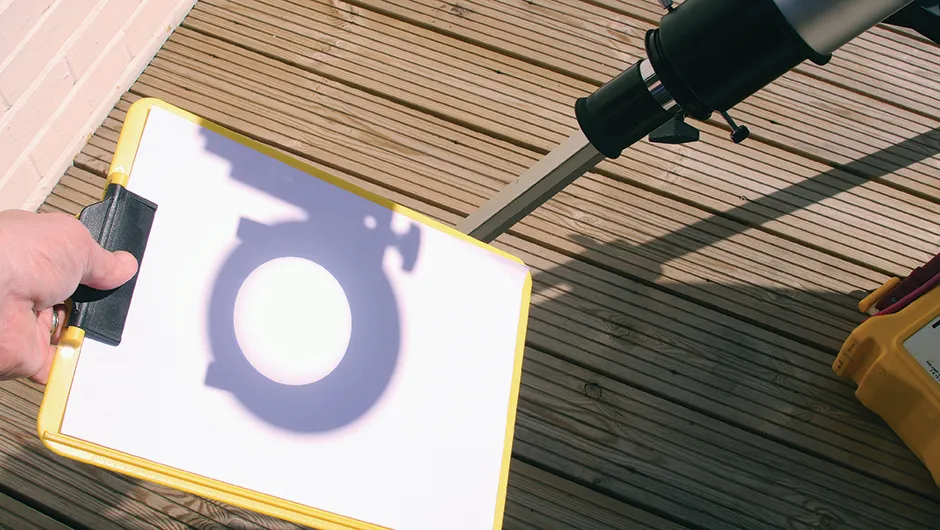
You can use a refractor telescope to project an image of the Sun onto a piece of white card fitted at the front of the tube, to create a shadow zone and increase the contrast of the view.
It is important that any finderscope has its caps in place, and make sure you don't look through the telescope. For help with this, read our guide to building your own solar projection screen.
3
Use a colander
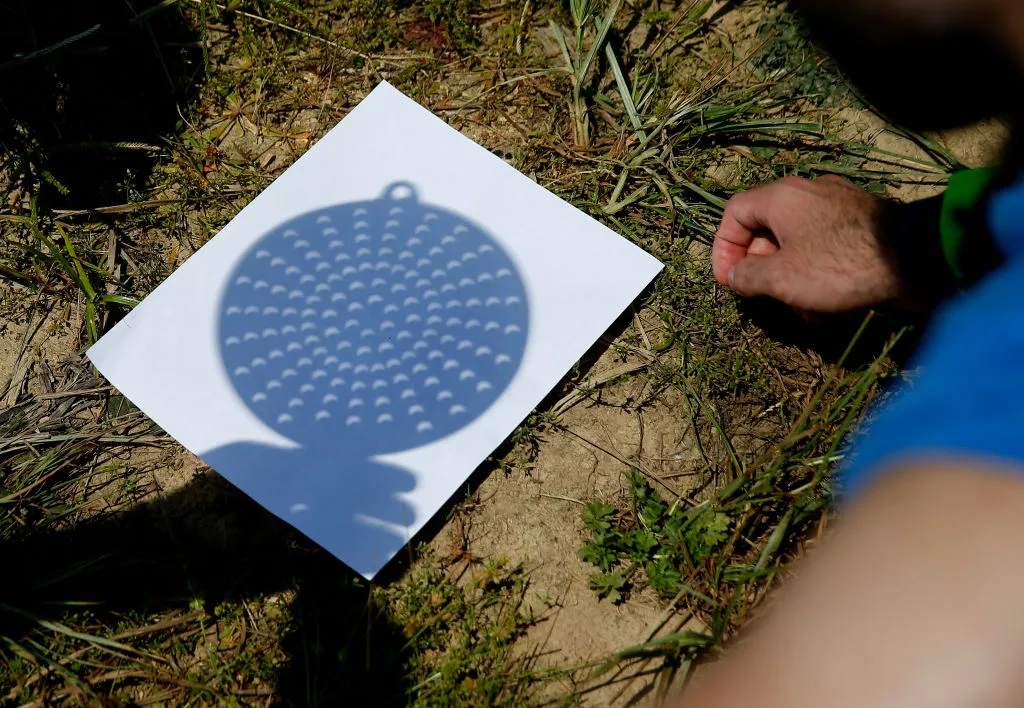
Another safe way of viewing an eclipse is the kitchen colander method. Each of its tiny holes will project a small solar disc onto a white card, and at maximum eclipse you’ll spot the notch taken out of the solar disc. You can apply the same principle by using a pinhole solar projector.
4
White light filters
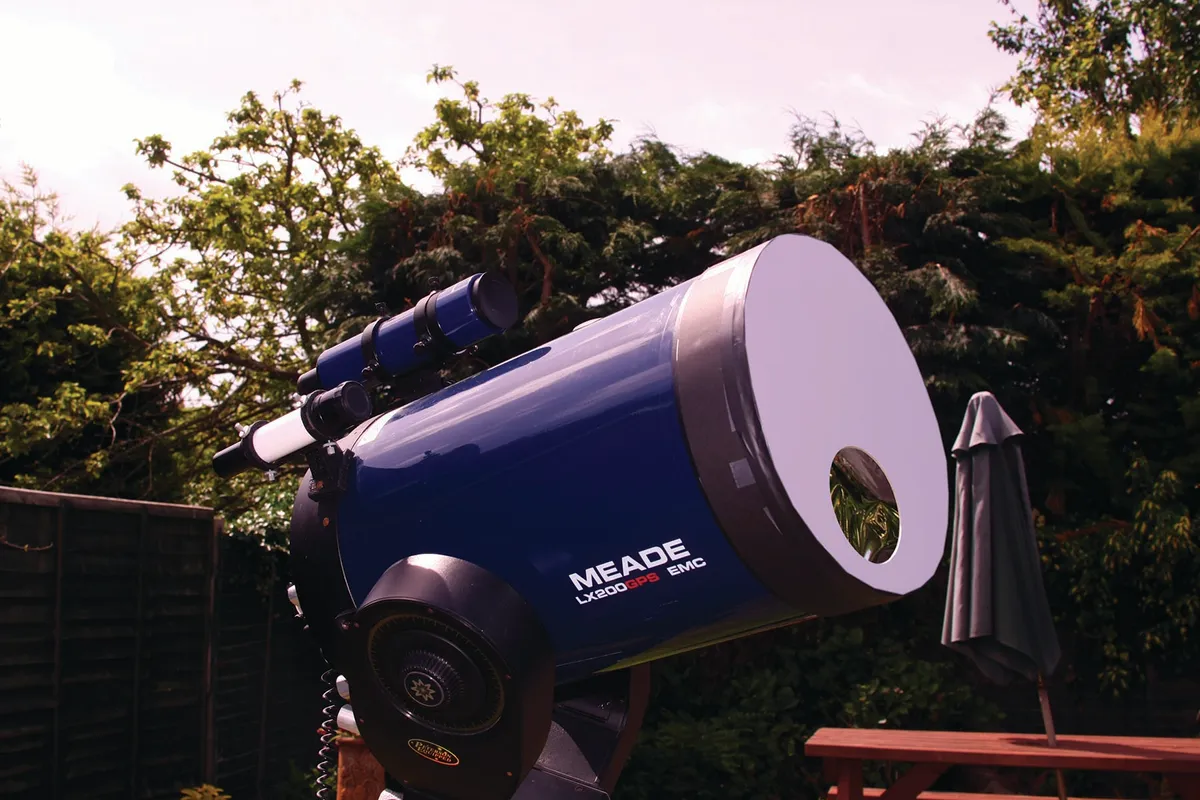
White light filters can be purchased or made for your telescope for direct viewing using certified specialised solar film that cuts the light down to a safe level.
The use of a solar safety filter such as a Baader AstroSolar film is recommended, and this should cover your scope’s aperture.
If the film isn’t large enough, cover the scope’s aperture with card and cut a circular hole in it, over which to fit the filter.
If your scope has a secondary mirror central obstruction, make the hole off to one side – an offset aperture mask. Don’t forget to cap, filter or remove any attached finderscopes.
5
Solar telescope
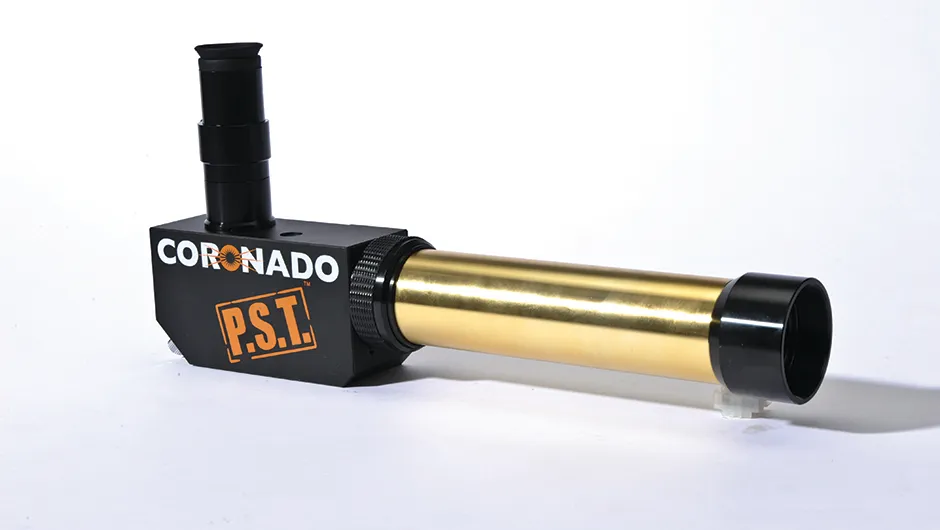
You can even buy dedicated solar telescopes to view the event in a range of wavelengths, including hydrogen-alpha, calcium-K and magnesium light. For more on solar telescopes read our guide on how to safely observe the Sun.
Whatever method you use, ensure you view it safely and enjoy the spectacle of our Moon passing across the Sun’s disc!
If you do manage to see or even photograph the eclipse, we'd love to hear from you and see your images. Get in touch via contactus@skyatnightmagazine.com.
Paul Money is BBC Sky at Night Magazine's Reviews Editor.
Pete Lawrence is an experienced astronomer and a co-host of the Sky at Night.
This guide originally appeared in the June 2021 issue of BBC Sky at Night Magazine.
